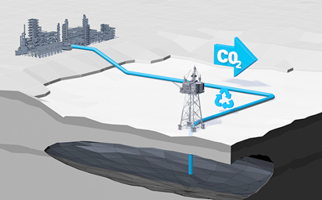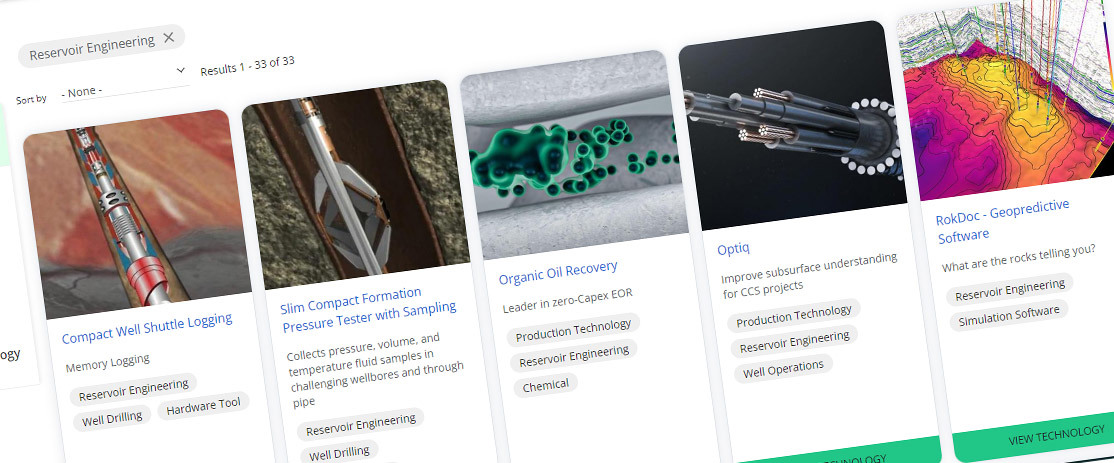Seismic acquisition, processing, and modelling remain key areas of operators’ technology spend. In a mature basin like the UKCS, there is a need for high quality seismic data and interpretation products to identify and de-risk more complex exploration targets. The easy targets have gone but new processing methods can de-risk previously disregarded leads and prospects and identify new targets in areas of complex geometries, e.g., salt, volcanic provinces.
We are seeing increased seismic acquisition for CS purposes, and a requirement for modern 3D seismic baselines prior to first injection. Processing and imaging to elucidate intervals, not previously a focus for oil and gas, is being undertaken (in SNS modelling for CS), and software is being developed/updated to handle CO2 as a fluid for effective modelling of its behaviour in the reservoir.
The latest software includes more advanced reprocessing of pre-existing mature data to gain further insight into missed pay and trapped volumes and uses applications of machine learning to more rapidly interpret historical data.
Exploration technologies
- Operators’ technology focus is increasingly on reprocessing to increase value from acquired data to drive time and cost efficiencies.
- The interest in seismic and exploration technologies is concentrated within a subset of operators and is aligned to basin strategies and opportunities, which this year, includes carbon storage.
- Five operators carry at least five exploration technologies in their current plans, with 21 operators reporting at least one technology in this category.
In common with other technology areas, operators focus primarily on deployable technologies, i.e., in early commercialisation or proven stages.
However, more than in other areas, operators participate directly in the development or adaptation of 48% of the exploration technologies in their plans.
Readiness definitions: Early development (TRL 1-4), late development/pilot (TRL 5-7), early commercialisation (TRL 8), proven (TRL 9)
High-definition broadband for Ocean Bottom Node (OBN) acquisition has become business as usual. Focus remains on continuously improving acquisition approaches (sampling density, frequency spectrum) resulting in enhanced imaging such as deeper imaging or fracture visualisation.
Advances in newer technologies such as DAS VSP continues along with ongoing efforts in cost reductions of acquiring time-lapse 4D seismic surveys. Autonomous node technology could potentially reduce cost and acquire data in spatially constrained environments.
New this year are Flare Sirius Catalogue used in the operators’ local network drives in conjunction with the National Data Repository to find missing data, correctly tag it, and store for upload, and 4D Full Wave inversion to identify changes in rock velocity caused by production.
Emerging technologies include DAS micro seismic events, automatic detection and processing algorithm development and tests.
- 4D seismic acquisition: Address the potential for imperfect reservoir sweep in a potentially complexly-connected reservoir. 4D acquisition and processing in thin injectite sand bodies subject to water sweep.
- TRL 9 commercially available
- TRL 9 commercially available
- Flare Sirus Catalogue: Software application that allows National Data Repository completeness to be assessed. It subsequently allows search of operators’ local network drives to attempt to find any missing data, tag it with the necessary category and store it awaiting upload.
- TRL 9 commercially available (NEW)
- 4D FWI: Full wave Inversion to identify change in rock velocity caused by production.
- TRL 9 commercially available (NEW)
- Autonomous nodes: Pilot for the use of autonomous nodes (AUV+nodes) to deploy/recover seismic nodes on the seabed without use of ROV or cables.
- TRL 9 commercially available
- TRL 9 commercially available
- DAS VSP: This is part of a field trial for utilising “Borehole DFO” for seismic surveillance on an asset and is a first for operator. DAS VSP technology may help to augment the future 4D seismic programme through the provision of low cost, localised and on demand seismic surveillance.
- TRL 8 early commercialisation
- TRL 8 early commercialisation
- Marine vibrator: Technology reduces acoustic impact on marine life. This technology has been in use in the North Sea for a number of years with more recent efforts to broaden its bandwidth.
- TRL 8 early commercialisation (NEW)
- DAS micro seismic events: DAS recording at seabed of micro seismic events, automatic detection, processing algorithm development and tests.
- TRL 1-4 early development (NEW)
- Surface DAS: Surface fibre optic for 3D reservoir imaging.
- TRL 1-4 early development (NEW)
There is continued focus on extracting maximum value from existing data, with significant advances in reprocessing techniques in recent years. There is focus and spend on reprocessing of existing datasets and de-risking infill drilling opportunities.
New this year are seismicity monitoring system design, and plug-ins to help improve production forecasts from reservoir simulations. Emerging technology includes machine learning for extracting micro seismic events from proprietary antenna recordings, and surface DAS for 3D reservoir imaging.
- Diffraction imaging and vertical image projection: Seismic processing technique to better image sand injectites not observed by conventional processing.
- TRL 9 commercially available
- TRL 9 commercially available
- Extended elastic impedance modelling: Extended elastic Impedance modelling. Use advanced analysis techniques to evaluate distribution of best pay within proximal turbidite fans and evaluate potential well opportunities.
- TRL 9 commercially available
- TRL 9 commercially available
- Seismicity monitoring system design: Undertaking modelling of expected levels of seismicity and design system for potential future deployment to monitor operators’ carbon storage sites with vendor Bristol and Oxford Passive Seismic (BOPS) research consortium.
- TRL 9 commercially available (NEW)
- TRL 9 commercially available (NEW)
- Petrophysics petrel plugin: The objective of this project is to improve production forecasts from reservoir simulators, more accurately locate the remaining oil, and de-risk infill drilling opportunities.
- TRL 8 early commercialisation (NEW)
Optimised for large-scale surveys, the Petrel™ multiphysics plug-in provides tools to integrate electromagnetic (EM) and potential fields data with geological knowledge, seismic data, and well logs. Petrel Multiphysics comprises three individual modules: Petrel magnetotellurics (MT), Petrel controlled source EM (CSEM), and Petrel gravity and magnetics (GM).
Technology example link
- Machine learning for detection: Use of machine learning technologies for extracting micros seismic events from proprietary antenna recordings.
- TRL 5-7 late development/pilot (NEW)
- Surface DAS: Surface fibre optic for 3D reservoir imaging.
- TRL 1-3 late development/pilot (NEW)
- Advanced seismic interpretation tools: New generation algorithm. Improves speed and quality of auto-tracking of seismic horizons.
- TRL 5-7 late development/pilot
Operator focus is on technologies using AI and machine learning, and advanced analytical methods of improving knowledge of reservoir geology and previously hidden volumes. Emerging this year is research into progressing the transition to a low carbon economy.
- Chemostrat data science project with Earth Science Analytics: Machine learning chemostratigraphic predictions to generate a better understanding of stratigraphy.
- TRL 9 commercially available
- Depo gridding: Trial using unstructured depogrids which can honour complex geological structures and layering more accurately than standard geocellular models and can be used in a next generation simulator.
- TRL 9 commercially available
- 4D modelling: Software for subsurface reservoir management visualisation and integration. Integration and Interrogation of all available data (seismic, well, modelling 2D/3D/4D).
- TRL 9 commercially available
CoViz 4D makes it possible for multi-disciplinary asset teams to simultaneously view and interrogate all available data from seismic to simulation, regardless of the original data source. CoViz 4D allows users to visualise and understand how development decisions affect the reservoir throughout the history of a field.
Technology example link
- Subsurface CO2 storage assessment: Subsurface modelling with potential for new data acquisition and processing to allow modelling of CO2 injectivity, migration within the reservoir and containment of the CO2 subsurface. Understand the risk from CO2 storage in depleted reservoirs and critically, the assurance of the containment within the reservoir and include assessment and impact of P&A'd wells in the existing reservoir.
- TRL 1-4 early development








